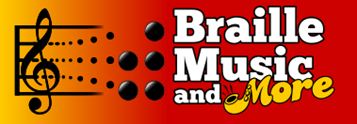Introduction
Have you wondered how individuals with visual impairments connect with the world of music? While traditional music sheets may pose challenges, Braille music sheets offer accessibility and empowerment to the visually impaired. With the help of this tactile method, the visually impaired can read and understand music notation with the help of the expertise.
In this blog, we have tried to cover the world of Braille music sheets. Also, you will find a few basic tips to understand braille music sheets and what resources are required to help the visually impaired navigate the world of music.
What is a braille music sheet?
For visually impaired individuals, braille music sheets help them with the opportunity to learn musical notations. It allows them to interpret and perform their musical compositions without any glitches. Just as braille helps people read and write texts, braille music helps them to learn and read music notes. There a different signs and different sets of dots used to represent different musical elements.
Learning the basics of braille music sheet
First, you have to start with the Braille music alphabet to get familiar with Braille music sheets. This system includes signs and symbols of notes, pitches, dynamics, other musical elements, and the musical code found on Braille music sheets. One needs to familiarize themselves with these symbols to understand and analyze the music.
Braille music sheets are notable for their utilization of octaves. These cues help musicians discover the full spectrum of musical interpretation by guiding them across the note's range. Musicians can now fully experience the rhythm and melody of music thanks to this tactile representation.
Layout of a braille music sheet
Braille musical sheets also have features besides the musical alphabets and octave indicators. The features include dynamics, key signs, articulations, and time stamps. Dynamics helps in the type of music played and maintains its volume and loudness. Meanwhile, articulation helps in playing the notes. The Key Signs allow the pitch of the notes, and the Time Signature stands for the metronome of the music played.
Here are a few tips to start with:
- Practice Regularly:
Like any new skill, decoding Braille music sheets requires practice. Consistent practice will enhance your proficiency in recognizing symbols and notations.
- Use Resources:
Leverage Braille music resources, including textbooks, online courses, and tutorials. Many organizations provide materials to support individuals learning Braille music.
- Start with Simple Pieces:
Begin your journey by decoding simpler Braille music pieces. As your skills progress, gradually tackle more complex compositions.
- Seek Guidance:
If possible, connect with experienced Braille music readers or transcribers like Braille Music and More who can provide guidance and support as you learn.
Conclusion
Through the rewarding process of decoding braille music sheets, people with visual impairments can explore a whole new realm of musical expression.
Beginners can confidently dive into this enlightening experience by grasping the fundamentals of the Braille Music Code and the structure of a Braille music sheet.


